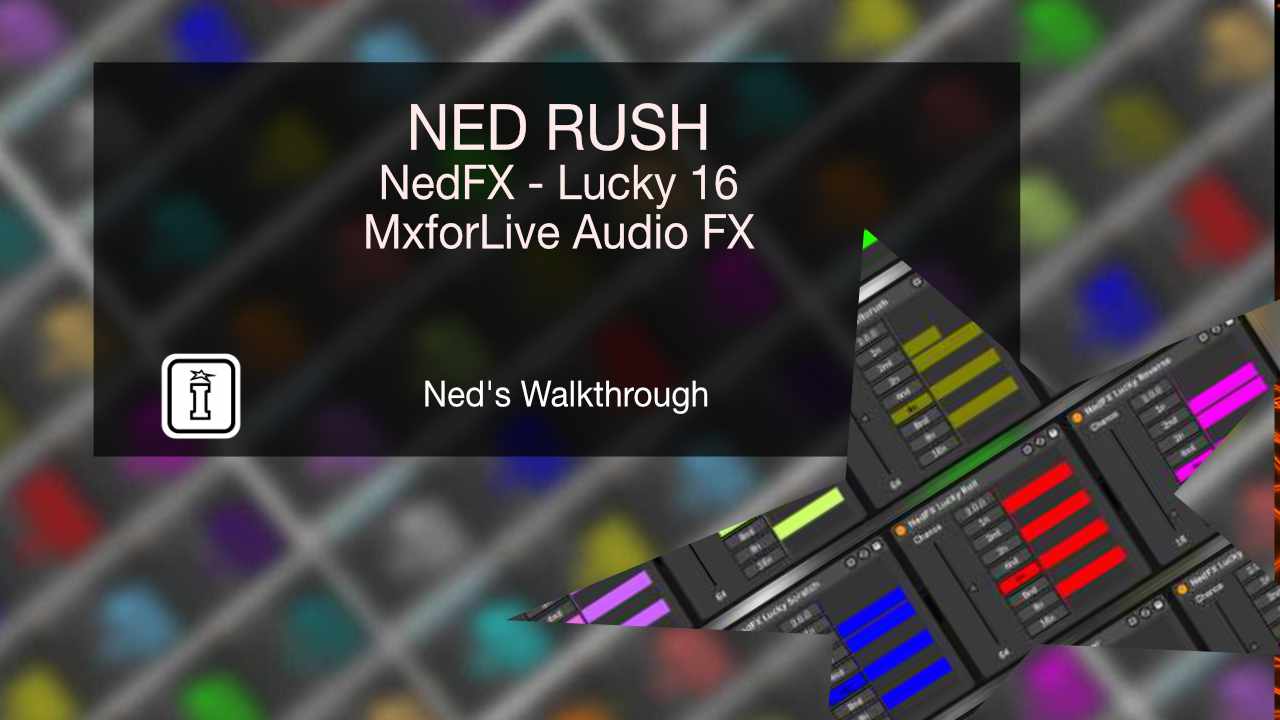The heart of Gem is a 12 bit Linear Frequency Shift Register (LFSR)
The 12 points represent a binary number which is then scaled to create a note value
Every step rotates the binary sequence by 1, changing the note output
The sequence can be played either every step or as a euclidean pattern
GEM CONTROLS
- Rate_of_Change: Controls the probability of one of the 12 bits being changed. Clockwise = higher probability
- Velocity: Controls how the output of the LFSR – the 12 bit sequence – affects the velocity output values… Is magic therefore unpredictable
- Clock: Sets clock pulse rate as a division of Live’s tempo
- Clock_Divider: Divides the master clock for even slower clock pulses – by up to 128 times…
- Clock_Swing: Old school 50-75% swing
- Delays every second clock pulse
- Trig: When the button is GREEN a note is triggered every step
- When the button is RED notes are triggered based on the Euclidean Trigger Sequencer in the central display
- >_<: RED = Forwards. GREEN = Backwards
- Sequence_Steps: Works like a reset control
- Values over 12 are wrapped around (modulo)
- Sequence_Fill: A classic euclidean Fill algorithm – spreads the ‘Hits’ as evenly as possible
- Sequence_Start: he step the sequence starts from
- Scale: Selects the Musical Scale for the Scale Scan Module to scan through.
- Scale_Root: Sets the root note of the chosen scale
- Pitch_Min: Selects lowest note played irrespective of Root
- Pitch_Max: Selects highest note played
- In semitones above Range_Min
- When Range_Min is changed Range_Max will follow – keeping the interval constant
- Transpose_Sequence: Draw a pattern of pitches onto the panel
- -11 to +11 MIDI Notes
- The value output by this sequence will be added to the value output by the Binary Note Sequencer
- Transpose_Sequence_Length: Sets the length of the Transpose Sequence
- Transpose_Sequence_Clock_Divider: Sets the clock division fos the Transpose Sequence
- Transpose_Sequence_On/Off: GREEN = Transpose Sequence ON
- ASR_1, 2 & 3: For polyphonic use
- Works like an ‘Analogue Shift Register’
- Any value above 0 activates the relative ASR which Offsets (delays) a duplicate note sequence by the set value – in Note Triggers

Chris Krupa –
Lovely little sequence generator; not too simple, not too complex, so fits a sweet spot of just drop it in and tweak a little something out with no trouble and fine tune at leisure…
Matt Hooper –
This is a great little Euclidean style sequencer, perfect for getting down some melodic grooves, bass lines and riffs.
I like the ease of getting ideas fast, just the right amount of tweakability too.
Cheers 😉
NEIL FRAZER –
Fantastic little sequencer from a very underrated developer. I would recommend checking out his other devices is you are a fan of Max sequencers. Very easy to use and very quick to get results
robert price –
Lots of fun. Easy to use, but not a one trick pony.
David Harkett –
Properly useful Euclidian style sequencing – a simple clock type interface that gets the job done, and the step increment gives some nice flexibility and tweaking without needing pages of hidden menus. It’s a little gem indeed.
karl Odlum –
Gem is well… a Gem.
Part Euclidean but has its own flavour.
A great little tool for happy accidents without ever getting too wild or off base.
Highly recommended.
Richard –
This is a very unique and yet very simple and totally effective sequencer
I recommend to anyone being either hyper advanced or a newbie
It is self explanatory and can be use in many various context suitable to many styles
so you won’t have a limited impression nor use of this simple tool made by a clever one
PeaceR ” )
rodolfo cardoso –
Love it!